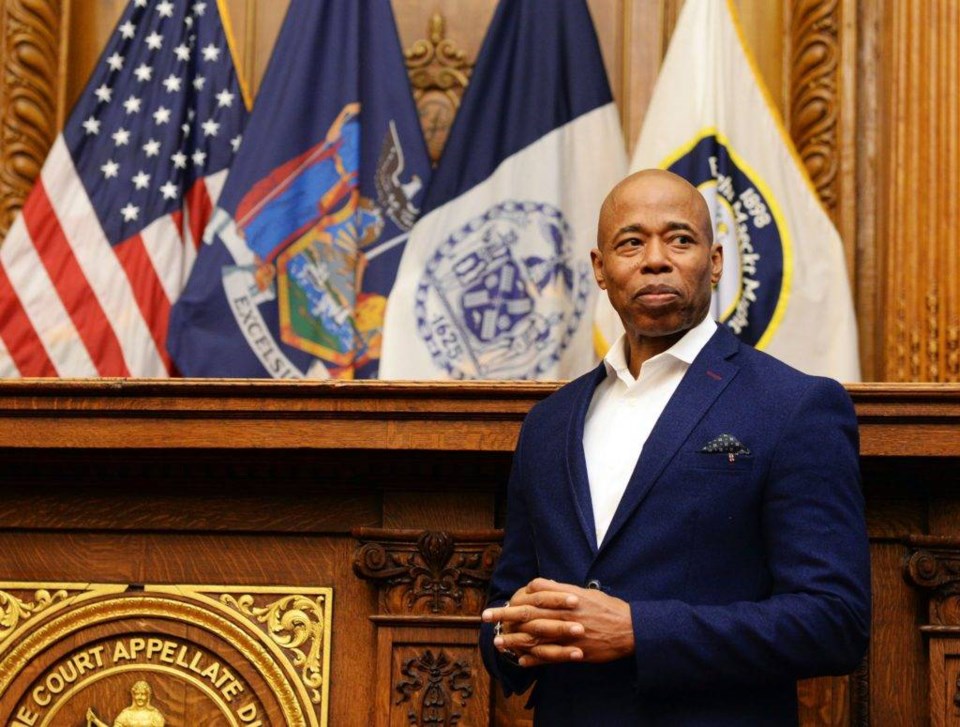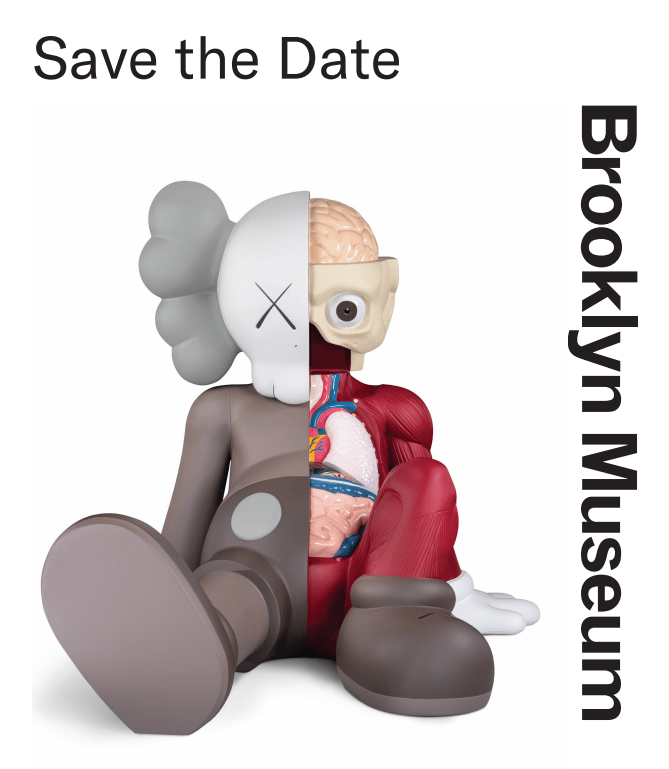On April 10, Michael Kaves' phone started blowing up with texts about one of his artworks.
The Bay Ridge artist known internationally as Kaves was about to discover a mural he got permission to paint 13 years ago had suddenly been erased.
He opened Twitter to see a video of NYPD 84th District officers using concrete-grey paint to blot out his artwork on a wall in Vinegar Hill, alongside the caption, "Let's keep working together to keep NYC graffiti-free!"
Kaves said his jaw hit the floor. "I was in shock. My piece was up on Twitter being buffed, being painted over, and it was the police buffing the piece."
He soon realized his mural had got caught up in the NYPD's latest 'graffiti cleanup' campaign. And he is not the only New York City artist to report their legal artwork being painted over.
The campaign, launched April 10 in Bushwick by NYPD commissioner Dermot Shea, has been inviting New Yorkers to report graffiti they wanted "cleaned up" since March. Kaves' piece had been chosen as one of the first to go.
"This was a legal wall, up for 13 years, it's been in books, TV commercials, art tours, it was a destination... So why was it treated with no regard? That's the biggest insult to an artist."
After cooling down, the 51-year-old decided to "do things the right way" and hire legal counsel.
He is now leading a class action lawsuit on behalf of himself and other artists whose work is currently in danger of being painted over by "untrained" cops and volunteers on a mission to clean up the city this summer.
Rise in graffiti?
In the past few weeks, a rash of articles have cropped up on the rise of graffiti amid the pandemic.
Complaints have come from SoHo, where a hairstylist told the New York Post new graffiti was making the neighborhood look "junkier," and the West Village, where residents are complaining about both trash and graffiti.
In response, Mayor Bill de Blasio promised to crack down on graffiti this summer. "We're going to address the graffiti issue across the board and it's one of many things we're doing to bring this city back," he said at a press conference Thursday.

Brooklyn Borough President Eric Adams also told the New York Post, if he becomes mayor, he'll scrub out "defacements," saying it only allows lawlessness to spread.
"It was a mistake when the city zeroed out funding for graffiti removal, and I have partnered with local civic groups in recent months to take on illegal vandalism."
The Office of the Brooklyn Borough President told BK Reader it funds organizations that work with businesses to identify areas "in need of clean-up," but any removal is done with the permission of the owner of the building.
Artists worried
The newly-relaunched NYPD "graffiti cleanup" initiative invites members of the public to report walls they would like the department to clean up.
It then seeks to partner with local businesses and members of the community — including kids and teens — to paint over the reported areas. One of the aims is to "strengthen trust" between the NYPD and the public. As of April 12 there had been 537 locations the NYPD had identified from community outreach, it told AMNY.
But New York creatives like KAVES fear the City's crackdown on graffiti isn't checking whether the locations identified for cleanup are in fact sites of legal artworks.
Bronx-born artist OJ Jimenez is also warning others to protect their work, after his was painted over by the City on the Lower East Side.
In 2015, he said his crew painted the exterior of a gallery on Orchard and Delancey Streets. "We had permission, but did the absolute best in making it look like we didn't."
On his birthday, he went past the gallery to see it had been painted over by the city in "a sh*t yellow." He said they City explained that a previous landlord had filed with "Graffiti Free NYC," and it had not consulted with the property owner or tenants before erasing the work.
"So if you know any spot with legitimate graffiti on it, that ain't Banksy or Mr Wheat Paste College Art Face, then tell them to GET ON IT ASAP and protect our murals," he wrote to followers on his Instagram account HiLoveNewYork.
"Once it's gone, it's gone forever."
The lawsuit
Kaves' lawsuit, which names both the NYPD and City of New York as defendants, says the graffiti campaign is endangering hundreds of valuable, recognized, and permitted artworks across NYC.
"Using an undiscerning eye and an obtuse brush, the untrained crew went out to blot out art from street canvases," the lawsuit says.
Like Jimenez, he said when cops painted over his work — which was dedicated to his late mom — they hadn't spoken to the property owner, tenant or artist to find out whether the work was legal.
"Both myself and my collaborator on the piece both lost our mothers, and we were both raised by incredible Brooklyn mothers, so it was a dedication to both."
The owner of the property at 95-97 Bridge Street could not immediately be reached for comment.
Kaves said the cleanup seemed to be a step backwards into the days of "broken windows" policing made popular under former New York Mayor Rudy Giuliani in the 1990s.
When he started doing graffiti, it was criminalized. Today, not only is it respected, it's also a booming, multi-million dollar market and a source of tourism capital for New York City.
"A lot of kids come from broken homes, and I was one of them, and I found a voice in a spray can," Kaves said.
"In Brooklyn at one time doing graffiti you were a black sheep, and then you became somewhat of a street celebrity," he said. "I went on to take it from where it began, on the subway cars and walls, to commission pieces for corporate and public clients, from galleries to museums, and being celebrated in all those areas."
Many of the city's most celebrated artists today also started drawing in the streets of New York. Keith Haring and Jean-Michel Basquiat were graffiti artists, and in 2019, works by Basquiat generated $130 million on the secondary market and those by Haring totalled $42 million, ArtMarket reports.

New York City itself advertises a graffiti tour of Bushwick on its tourism website, the Brooklyn Museum is holding a massive exhibition of KAWS, who started out in graffiti.
"You wanna be part of your community?" Kaves said, speaking to the NYPD and the City. "Well, read the writing on the wall. It starts there. New York should be embracing graffiti as part of its culture and what makes Brooklyn, Brooklyn, what makes New York, New York."
His lawsuit is asking for an injunction preventing the NYPD from engaging in destruction of street art and a full stop of the "graffiti clean up" operation. Kaves is also seeking an order for the NYPD to revise its policies on cleaning up murals in the city.
The NYPD told BK Reader it was declining to comment on pending litigation.



